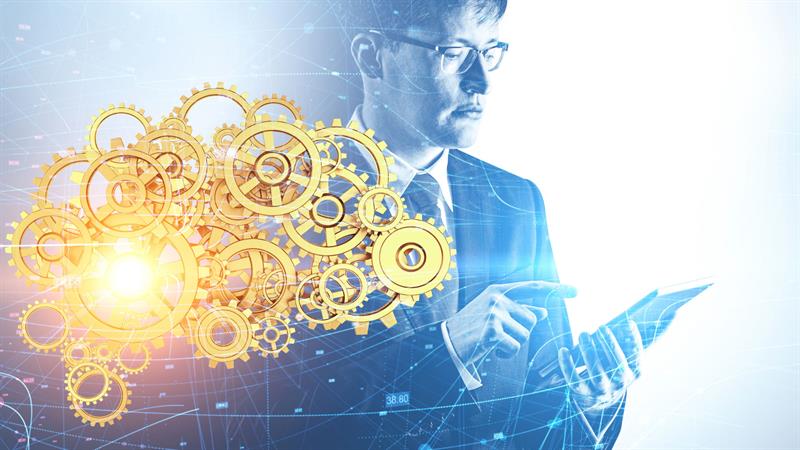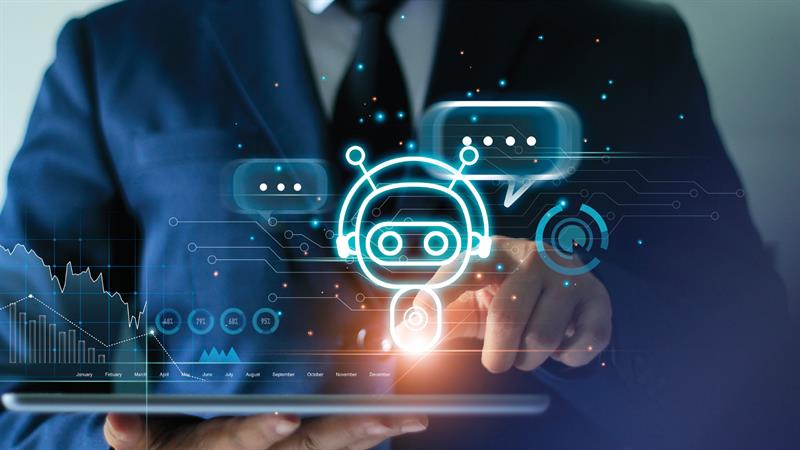The evolution of CX
In biology, evolution involves a cause and effect. Some state or change-of-state in the environment (the cause) allows some evolved organisms to flourish (the effect). But the organism has no control over its evolutionary changes. These positive changes usually take considerable time to happen.
With customer experience (CX), evolution can happen very quickly. But luckily, marketing practitioners have the opportunity to impact and possibly influence the evolution of CX, at least for the benefit of their own organizations.
In this blog, we review the evolution of CX since the 1990s, identify its causes and propose what its future might be.

Click here to enlarge.
1998-2005: The experience economy online
This was the era of creating more memorable CX. In the original experience economy, businesses combined products, services and their versions of retail strategy to create personal experiences for their customers on multiple levels: Emotional, physical, intellectual and sometimes even spiritual. Unlike mere products or services, experiences resonate deeply to become memorable for customers.
Although some trace the experience economy back to the Industrial Revolution, it truly gained critical mass when service providers took centre stage, surpassing manufacturers in economic influence.
Best examples of the original experience economy
- When you visit Starbucks, you're not just buying coffee. You're paying for the warm ambiance, music, friendly staff, comfortable furnishings and free Wi-Fi. It's the entire curated Starbucks experience that matters.
- Ethical cosmetics brand, Lush, humanizes its products by featuring the name and illustration of the person who made each handcrafted item. This personal connection deepens the bond between the customer and the brand. The previous iteration of Lush used a mail-order distribution model with limited CX, and failed.
Adding the online medium to the experience economy was a macroevolutionary event for CX. It provided brands with a universally accessible digital store over which they had complete control.
With the experience economy online, creating joyful interactions with customers isn't a luxury; it's a necessity. As of 2022, 88 per cent of customers factor CX into their buying decisions alongside product quality and services offered.
2005-2010: Combining humans and technology
Next came the era of digital marketing. It allowed a fusion of humans and technology that significantly changed how businesses engaged with their audiences. The previous era developed the World Wide Web, allowing this era to begin with digital transformation.
Digital transformation is a fundamental shift that organizations undergo to integrate digital technologies into all aspects of their operations. It encompasses changes in processes, culture and customer experiences. Marketing, as a critical business function, was profoundly impacted by digital transformation.
The impact of digital transformation
- It reshaped customer relationships by personalizing content, recommendations and offers based on individual preferences.
- It began to explore new mediums (social media) as a brand development tool.
- It pursued omnichannel engagement for the first time. Here, humans and technology collaborate to provide seamless interactions across channels (websites now with live chat, email, social media, in-store, etc.). Customers began to expect consistent experiences regardless of the touchpoint.
How the marketing function co-evolved
- Data-driven decision-making: Marketers began to rely more on data analytics to understand the customer journey and inform strategies. While technology processes vast amounts of data, human expertise interprets the output.
- Content creation and distribution: Humans crafted compelling content, as technology automated distribution, targeting and tracking.
- Marketing beyond promotion: Marketing became a strategic partner in driving business growth. Technology facilitated this shift by providing insights into market trends, customer behaviour and competitive landscapes.
The synergy between humans and technology in digital marketing enhanced CX, drove efficiency, and empowered strategic decision-making. However, it also came with challenges – organizational inertia, skill gaps, as well as security and privacy concerns.
2010-2015: Change of pace
This was the era when mobile phones joined and expanded omnichannel. Push notification technology allowed communication with customers in real time. This broader, more direct omnichannel version of CX transformed how companies engaged with their customers.
Now, omnichannel refers to a holistic approach that considers a business through the eyes of its customers. It has become the orchestration of the customer experience across all channels—both traditional and digital—ensuring it is seamless, integrated and consistent. Research has shown that 73 per cent of consumers prefer shopping via multiple channels, highlighting the importance of providing a cohesive experience.
With customers having an unprecedented and growing number of ways to engage with companies, many organizations invested heavily in digital channels, assuming that being increasingly tech-savvy would reduce the need for live agents and save costs. However, companies often found direct customer interactions growing rather than declining, even with significant efforts to promote self-service options.
Amazon's approach: A lesson in omnichannel strategy
Amazon, a digital leader throughout all of the eras noted within this post, built self-service and e-care capabilities during the change of pace era. However, they took a different approach than many.
Instead of pushing customers towards digital channels, Amazon steered them to the channels best suited to their preferences, whether digital, live or company-initiated contact.
Live agents still played a crucial role in handling complex requests, demonstrating empathy and resolving issues quickly.
By the end of this era, an effective omnichannel strategy viewed all touchpoints as part of a seamless customer journey, combining digital and live interactions. Previous eras seemed to be replacing humans with technology in the customer experience, making this an interesting change of pace.
2015-2020: Understanding consumer perspectives
Although this era is about understanding consumer perspectives, it could also be named the era of the app. Mobile apps significantly impacted consumer behaviour and with the increased level of personal data points, how marketers understood consumer perspectives.
During this era, app usage and engagement went through the roof. People were spending an average of 30 hours per month using mobile apps. Apps began to play a crucial role in various micro-moments, including when users wanted to know, do, or buy something, or go somewhere.
The distribution of apps was almost as important as the app's design. Initially, apps were discovered and delivered through the major app stores (Apple App Store and Google Play). Later, a user's ability to search became a significant source for app discovery, eventually accounting for 25 per cent of app discovery. Consumers also found apps while engaged in other activities, such as watching YouTube videos, browsing mobile websites, or believe it or not, talking with friends in-person.
Successful marketing strategies of the era
- Increasing discovery by increasing awareness of their app beyond app stores. Leveraging search and other channels was essential.
- Keeping their app audience engaged with regular updates, personalized content and relevant notifications, leading to sustained engagement.
- Complementing their brand's offline experience (e.g., in-store special offers) through the app experience.
The rise of “big data”
Mobile apps provide marketers with a substantial new stream of personalized consumer data. Big data gave marketers the potential to understand consumer behaviour at a much more granular level. Leveraging data analytics to realize big data’s promise became the next big challenge for marketers.
By the end of this era, mobile apps had become a powerful tool for marketers to engage with consumers, understand their preferences and create meaningful interactions. Apps became the window through which marketers could see the true consumer perspective on their brands.
2020-2023: COVID-19 – Catalyst for CRM to CXM
This was the era of digital transformation and the evolution of CRM (Customer Relationship Management) to CXM (Customer Experience Management). What makes it unique from previous eras is that it was caused by a global health event. The pandemic accelerated the digital transformation of companies that had been underway in previous eras.
CRM vs. CXM
CRM focuses on managing customer interactions, sales and data. It's primarily about capturing revenue and understanding customers from the company's perspective.
CXM goes beyond CRM to create personalized, end-to-end customer experiences that scale across all channels in real time. CXM aims to surprise and delight customers by providing relevant, contextual interactions and in doing so, builds brand loyalty. For the marketer, it needs to be a cross-functional effort.
What CMX does
- It enables personalized experiences based on real-time data. Customers receive relevant content and messages.
- It ensures consistent experiences across all touchpoints, enhancing brand trust.
- For the marketer, it provides a holistic view of customers across channels and spans marketing, sales, service and support, creating genuinely actionable insights.
Opportunity with challenge
The evolution of CRM to CRX came with challenges, also caused by the pandemic. Remote work made it more difficult for marketers to achieve the cross-functional collaboration that was needed. Also, all marketers involved with delivering CXM during the pandemic had to consistently go to extraordinary lengths, which became the new normal for customers and senior management.
Today: AI drives CX
In the present era, generative artificial intelligence (GenAI) seems to drive everything. The ability of large language models (LLMs) to converse with humans in natural language suggests that GenAI may take control of the customer experience. However, the change of pace era of CX evolution allows us to suggest that this may not be the best strategy for success. We also recognize the surprising finding that digitally-native Gen Z’s favourite form of communication is ‘in-person’.
The evolution of CX over the past 20 years has been triggered by key technology advancements and significant world events. Marketers have no control over these events, but they do control how CX evolves with their own brands and their clients' brands. So, while we won’t predict the future, here’s how we think the era of AI drives CX should evolve:
- Any deployment of GenAI for CX purposes needs to improve the customer experience, not just improve efficiencies for the marketer. Most early GenAI-for-CX use cases focus on the latter.
- Pursuing the strategy above requires a slow, iterative approach with lots of first-person customer feedback. Focus on getting your GenAI deployment right, rather than fast.
- Make sure the humans in your company are part of the process so that they are motivated to develop and use the skills they are best at.
Authors:
Ursula Green, Vice President, CXO, Halmyre
Jeanette Kennedy, Global Marketing Lead, Microsoft Canada
Robert Wyatt, Business Services Director, Optima Communications International
Note: This article was co-researched and partially co-authored with Microsoft Copilot.
Sources:
- Salesforce Connected Customer Report, 2022
- Emma Sopadjieva, Utpal M. Dholakia & Beth Benjamin, “A Study of 46,000 Shoppers Shows That Omnichannel Retailing Works”, Harvard Business Review, January 3, 2017
- Nielsen, "Smartphones: So Many Apps, So Much Time," July 2014
- James Tiongson, “Mobile app marketing insights: How consumers really find and use your apps”, thinkwithgoggle.com, May, 2015
- Melissa DeWitte, “Gen Z are not ‘coddled.’ They are highly collaborative, self-reliant and pragmatic, according to new Stanford-affiliated research”, Stanford News, January 3, 2022





































